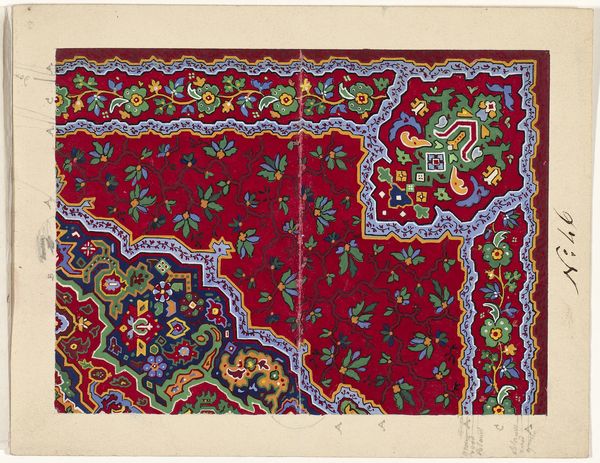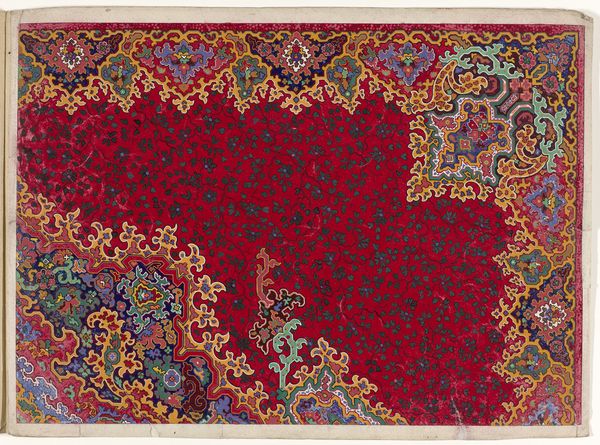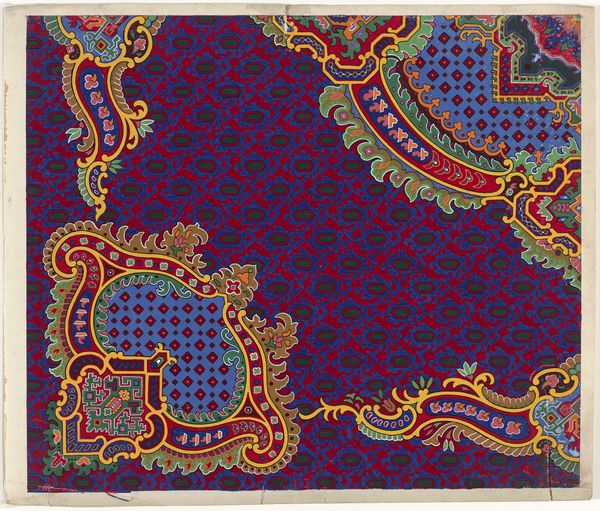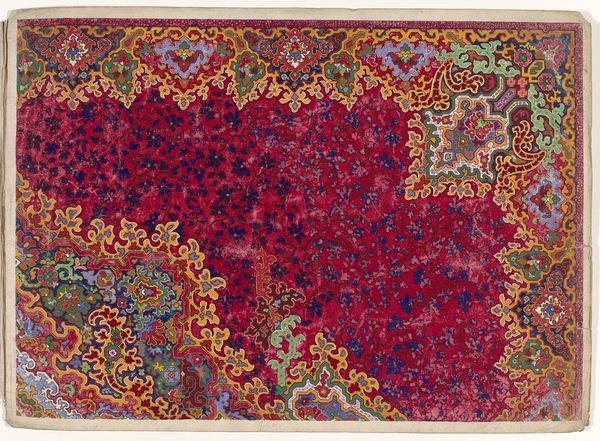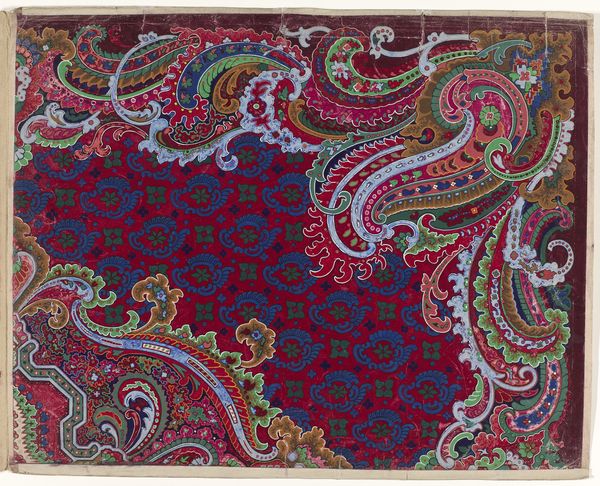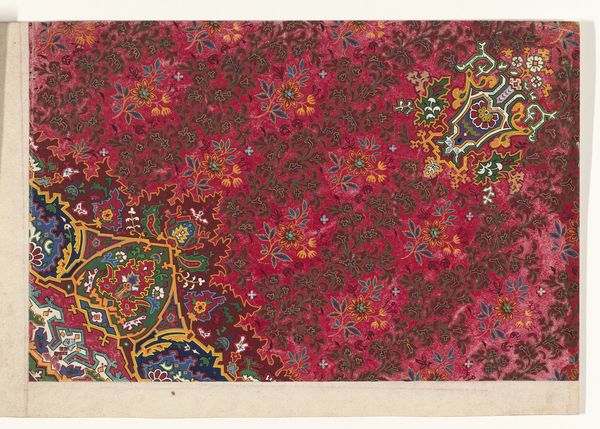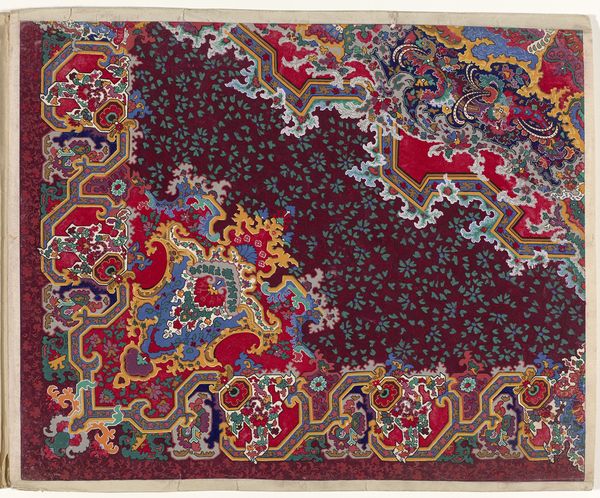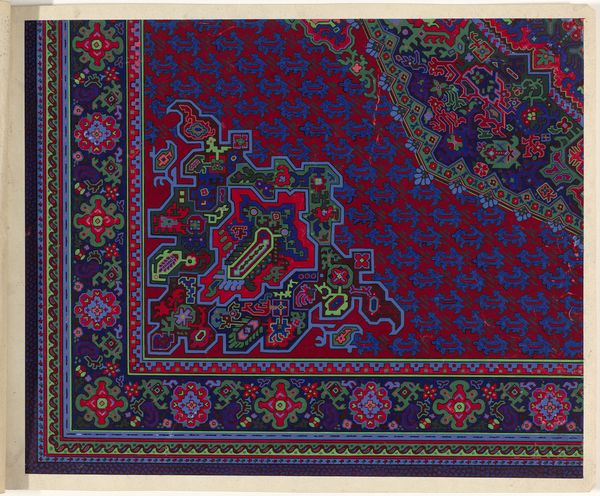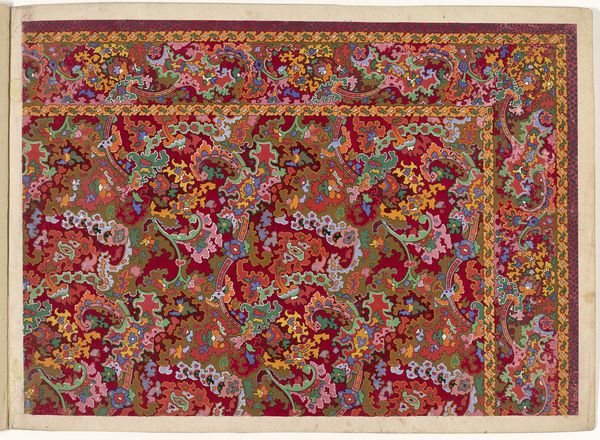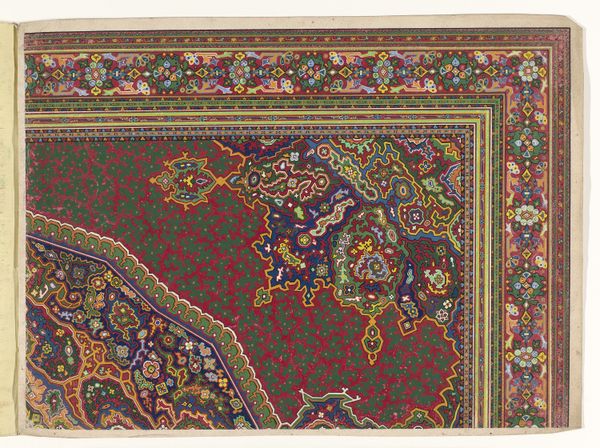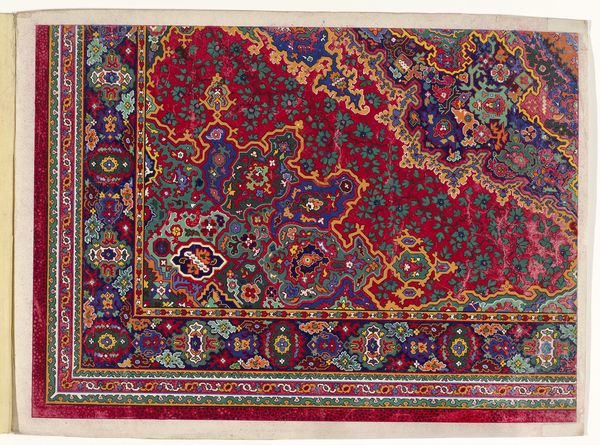
drawing, paper
#
drawing
#
natural stone pattern
#
naturalistic pattern
#
organic
#
paper
#
geometric pattern
#
abstract pattern
#
organic pattern
#
geometric
#
flower pattern
#
repetition of pattern
#
vertical pattern
#
pattern repetition
#
decorative-art
#
layered pattern
Dimensions: height 298 mm, width 404 mm
Copyright: Rijks Museum: Open Domain
Editor: This is a design for a carpet, dating from between 1854 and 1864. It’s an anonymous drawing on paper, full of really intricate floral and geometric patterns. It strikes me as very ornamental, a kind of Victorian maximalism. What do you see in this piece, from a historical perspective? Curator: Well, considering it as a historical object, this drawing offers a fascinating insight into 19th-century aesthetics and the Industrial Revolution. Designs like these were crucial for manufacturers producing textiles for a rapidly expanding middle class, keen to fill their homes with decorative items. Where would this carpet be placed, in terms of a domestic setting, or a more public space, in your opinion? Editor: Given the intricacy, I’d imagine it would be in a more formal space like a parlor, for show rather than high-traffic areas. A symbol of status and taste? Curator: Precisely. These carpet designs reveal the increasing importance of visually communicating status through consumer goods. How effective do you think it would be as an actual carpet? Does the design translate well from paper to a large-scale textile? Editor: That’s a good question. The densely packed details might get lost when scaled up, and the color choices could appear overwhelming. Maybe this drawing also functioned as aspirational marketing material? A promise of elegance rather than a practical design blueprint? Curator: An interesting angle. Designs like this tell us much about the period’s societal aspirations and anxieties, about wanting to create beauty within an increasingly mechanized world. Considering the means by which such items would then be manufactured in huge quantities, there’s a striking contradiction, don’t you think? Editor: Absolutely! It shows how deeply art is entangled with production, commerce, and our collective desire for beautiful things. It is a complex, rather beautiful intersection. Curator: Exactly. It changes how I think about this pattern: not just ornamentation, but as a historical and social statement, a story waiting to be unfolded.
Comments
No comments
Be the first to comment and join the conversation on the ultimate creative platform.

